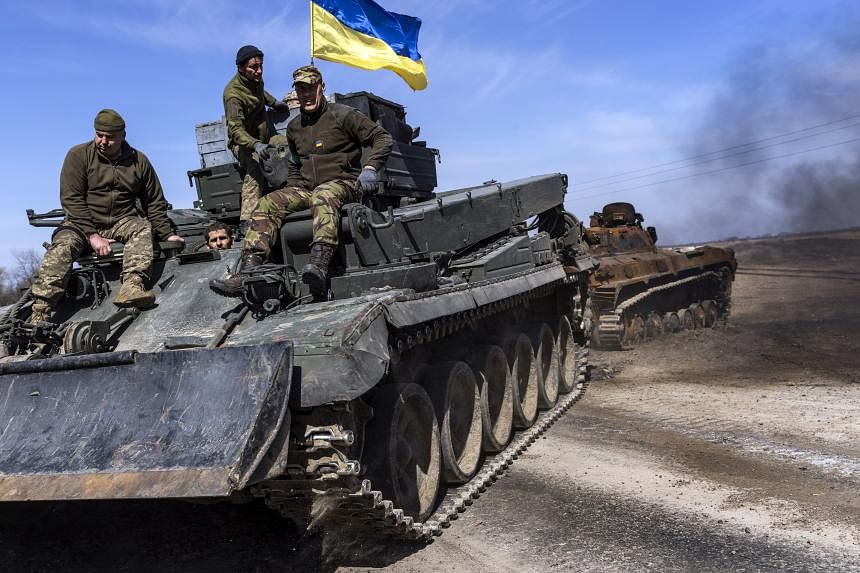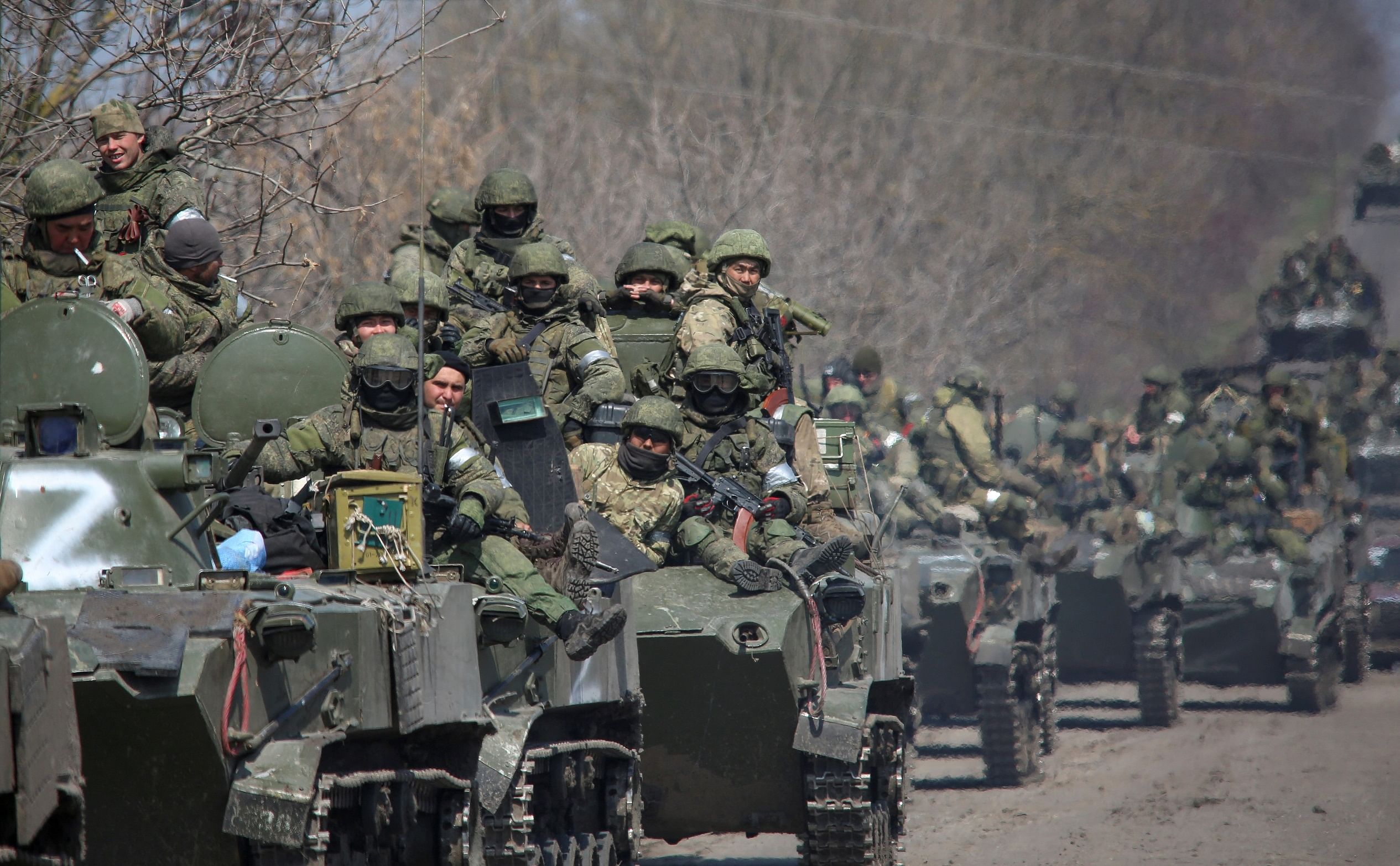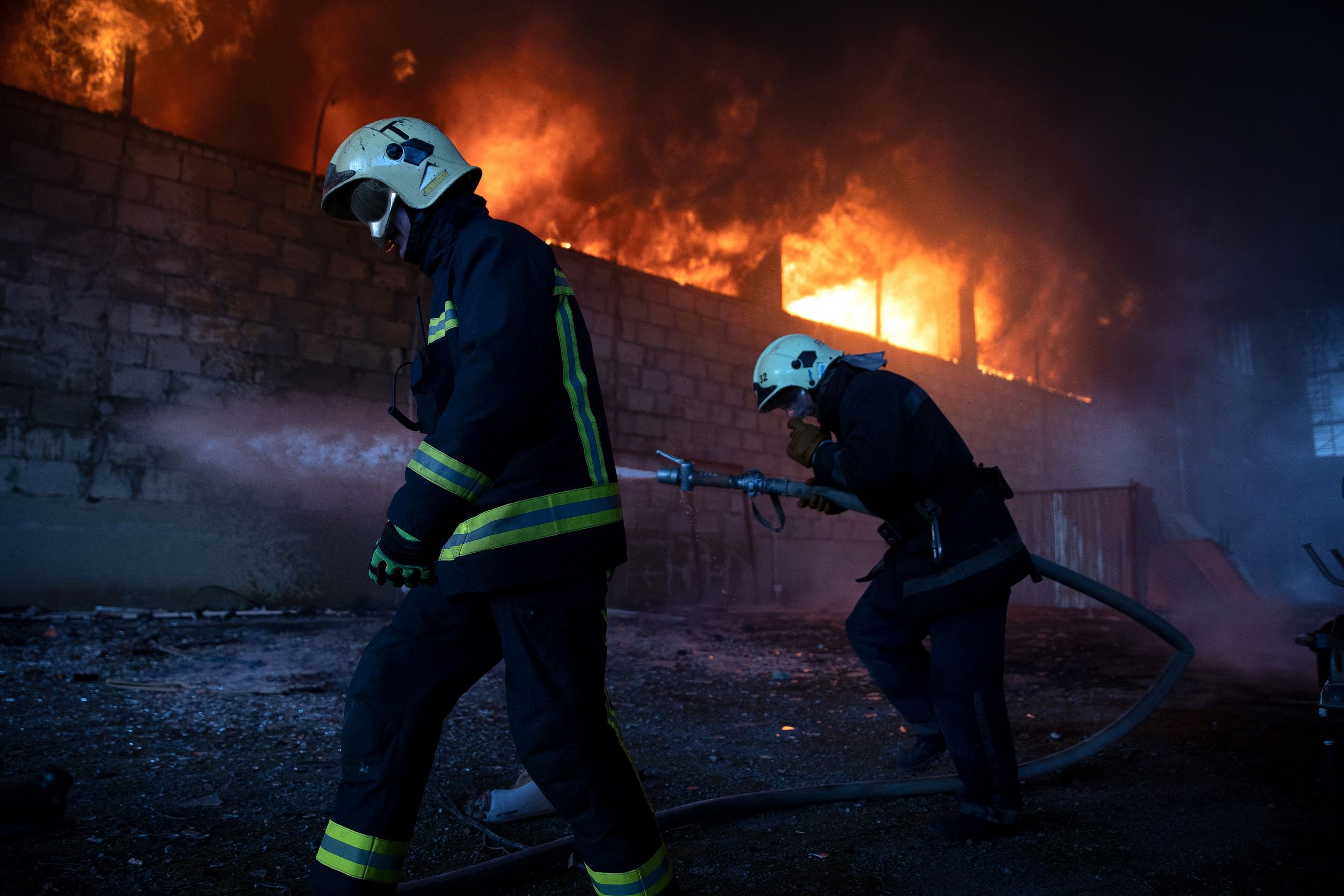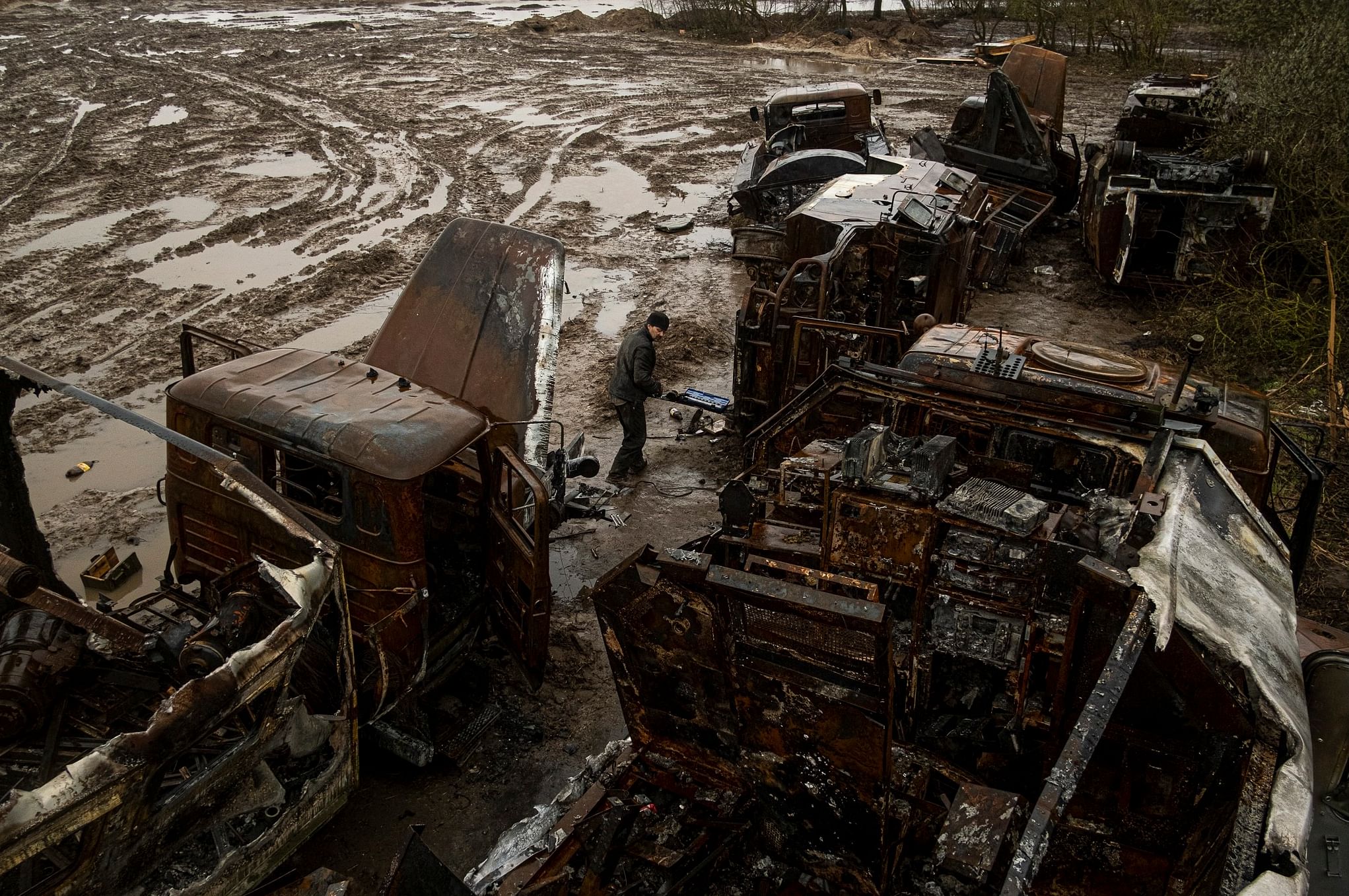 Ukrainian soldiers tow a damaged Russian tank from a field near the village of Lypivka, west of Kyiv, on April 15, 2022. PHOTO: NYTIMES
Ukrainian soldiers tow a damaged Russian tank from a field near the village of Lypivka, west of Kyiv, on April 15, 2022. PHOTO: NYTIMESWASHINGTON- Russia has sent a series of warnings to the Biden administration, including a formal diplomatic protest this week, demanding that it halt shipment of advanced weapons to Ukraine that could strike into Russian territory or risk unspecified “unpredictable consequences.”
The diplomatic note, called a demarche, was sent through normal channels, two administration officials said.
It was not signed by President Vladimir Putin or other senior Russian officials. But it was an indicator, one administration official said, that the weapons sent by the United States so far were having an effect.
It also suggested that the Russians were concerned about the new tranche of more sophisticated offensive weaponry, part of an US$800 million (S$1.1 billion) packagethat President Joe Biden announced the day after the Russian Embassy in Washington delivered the demarche.
US officials said the tone of the note was consistent with a series of public Russian threats, including to target deliveries of weapons as they moved across Ukrainian territory.
Officials said the note did not prompt any special concern in the White House.
But it has touched off a broader discussion inside the Pentagon and intelligence agencies about whether the “unpredictable consequences” could include trying to target or sabotage some of the weapons shipments while they are still in Nato territory, before they are handed off to the Ukrainians for the final leg of their journey.
The delivery of the protest note was reported earlier by the Washington Post.
The weapons that Biden authorised this week for transfer to the Ukrainians include long-range artillery that is suited for what US officials believe will be a different style of battle in the open areas of the Donbas, where Russian forces appear to be massing for an attack in the coming days.
While Pentagon officials were insistent in the run-up to the war in February that the United States provide only defensive weaponry that would avoid escalation, the nature of Russia’s attacks – including direct attacks on civilians and nonmilitary targets – appears to have muted that debate.
Jake Sullivan, the president’s national security adviser, described in an interview at the Washington Economic Club on Thursday how he and General Mark Milley, chairman of the Joint Chiefs of Staff, had reviewed weapons requests. They went over each item with their Ukrainian counterparts, talking about what the US had in its stocks and what it could deliver quickly.
Reports by pro-Kremlin media have highlighted anti-tank systems and other Western weapons being used by Ukrainian forces, promoting the idea that Russia is not at war with Ukraine but with a US-led alliance seeking to destroy Russia.
Biden and his aides have denied that, saying that they were trying to stay out of direct conflict with Russia and had no interest in US-engineered regime change.
In Moscow, commentators have been increasingly calling on Russia to strike Ukrainian roads and railroads to inhibit the weapons transfers.
While Russia has targeted many of Ukraine’s airports, the country’s ground transportation network remains largely intact.
“The time has come not to speak, but to attack,” Viktor Baranets, a military columnist for Komsomolskaya Pravda, Russia’s biggest tabloid, said on Friday. “Train echelons must be destroyed along with the railways.”
Russia’s concern is that the accuracy Ukraine showed in hitting its most sophisticated warship – whose defences should have been able to intercept the Neptune anti-ship missile, a derivative of a missile that was originally of Soviet design – will be extended with help from the US.
 Pro-Russian servicemen ride on armoured vehicles, on a road leading to the Ukrainian city of Mariupol, on April 15, 2022. PHOTO: REUTERS
Pro-Russian servicemen ride on armoured vehicles, on a road leading to the Ukrainian city of Mariupol, on April 15, 2022. PHOTO: REUTERS
It came as the level of concern among Russian officials over the effect of Western arms has been increasing, said Andrei Kortunov, director-general of the Russian International Affairs Council, a research organisation close to the Kremlin.
“It seems the United States and the West in general are right now testing the limits of Russian tolerance when it comes to weapons deliveries,” Kortunov said.
“It’s clear that these volumes are already so significant that they can affect the course of the hostilities, and this is raising concerns.”
A Russian deputy foreign minister, Sergei Ryabkov, said on Friday that Russia was “making it clear to the Americans and other Westerners” that attempts to slow down the invasion and increase Russian losses would be “curbed in a tough manner.”
He added that Nato vehicles carrying weapons across Ukrainian territory would be “viewed by us as legitimate military targets.”
His comments came in an interview with Tass, the state-run news agency.
Nato hands off weapons to the Ukrainians, so its vehicles would be unlikely to cross Ukrainian soil. But Ryabkov’s comments have heightened concerns about whether Russia would take the risk of striking inside Nato territory.
 Firefighters battle a blaze at a warehouse, after a bomb attack by Russian forces, in Derhachi, in eastern Ukraine, on April 15, 2022. PHOTO: NYTIMES
Firefighters battle a blaze at a warehouse, after a bomb attack by Russian forces, in Derhachi, in eastern Ukraine, on April 15, 2022. PHOTO: NYTIMES
When Putin announced his “special military operation” on the morning of Feb 24, he said that those “who may be tempted to interfere” in Ukraine would face consequences as severe “as you have never seen in your entire history.”
“No matter how the events unfold, we are ready,” Putin said at the time. “All the necessary decisions in this regard have been taken.”
But seven weeks into the war, Russia has so far appeared careful not to escalate the conflict in a way that could draw Nato countries more directly – for instance, not striking weapons convoys crossing into Ukraine from Poland.
“There are still fears regarding strikes that may hit the territory of Nato member countries,” Kortunov said. “One certainly does not want to create a pretext for some further escalation.”
In a news conference this week, Putin referred to the weapons deliveries only obliquely, describing the US as being “ready to fight against Russia to the last Ukrainian.”
“It is the essence of the current events,” he said.
 Destroyed Russian military vehicles are seen in the Chernihiv region of Ukraine, on April 13, 2022. PHOTO: EPA-EFE
Destroyed Russian military vehicles are seen in the Chernihiv region of Ukraine, on April 13, 2022. PHOTO: EPA-EFE